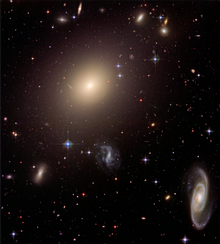 |
| February 07, 2020 |
Dear Reader,
Astronomers have just discovered an ultra-massive galaxy that grew rapidly when the universe was young and then, just as quickly, became inactive, tantalizing researchers. Next up, a new study suggests that bumblebee populations have plunged in both Europe and North America during the last few decades—and climate change is at least partly to blame. And lastly, the new coronavirus has so far led to thousands of illnesses and hundreds of deaths in numerous countries around the world. But those numbers pale in comparison to the flu. In the U.S. alone, the flu has already caused an estimated 19 million illnesses and 10,000 deaths this season, according to the CDC. Our main story today explains how these viruses compare, and which is more concerning. |
| | Sunya Bhutta, Senior Editor, Audience Engagement
@sunyaaa | |
 |
| |
| |
| |
| |
| |
| |
FROM THE STORE
 | | | |
| |
FROM THE ARCHIVE
 | | | |
| |
LATEST ISSUES
 |
| |
| Questions? Comments?  | |
| Download the Scientific American App |
| |
| |



















Comments
Post a Comment